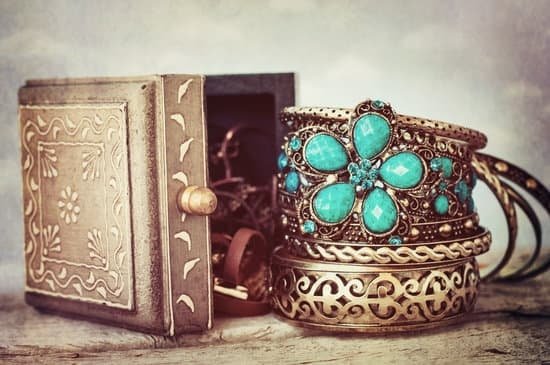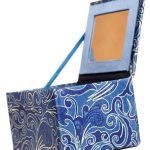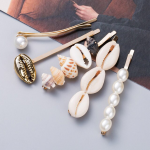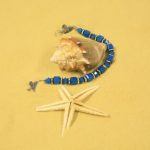When it comes to creating beautiful glass bead jewelry, one of the crucial aspects to consider is the type of glue used in the process. The right adhesive can make a significant difference in how well your jewelry pieces hold together over time. This article delves into the various options available and provides insights into what kind of glue for jewelry glass bead works best for different projects.
Selecting the appropriate glue for glass bead jewelry is essential to ensure the longevity and durability of your creations. Whether you are a seasoned crafter or just starting, understanding the benefits and drawbacks of each type of adhesive can help you make informed decisions during your crafting process. From super glue to epoxy resin to clear craft glue, each option has its unique characteristics that cater to specific needs in jewelry making.
Exploring the different types of glue available for glass bead jewelry, this article will provide a comprehensive comparison guide to help you navigate through the choices. By knowing the pros and cons of each adhesive, you can confidently select the most suitable option based on your project requirements and skill level. Stay tuned as we delve deeper into how super glue, epoxy resin, clear craft glue, and UV resin can elevate your glass bead jewelry creations to new heights.
Types of Glue for Glass Bead Jewelry
When it comes to creating glass bead jewelry, choosing the right glue is crucial to ensure the longevity and quality of your pieces. There are several types of glue available in the market, each with its own pros and cons. Understanding the differences between these options can help you make an informed decision on what kind of glue for jewelry glass bead projects is best suited for your needs.
One popular choice for bonding glass beads is super glue. Super glue, also known as cyanoacrylate adhesive, is known for its fast-drying and strong bond. It works well with glass surfaces and can create a secure connection between beads. However, one drawback of using super glue is that it can be brittle once dried, making it less suitable for jewelry pieces that may experience frequent movement or bending.
Another option to consider is epoxy resin. Epoxy resin is a versatile adhesive that consists of two components that need to be mixed before application. This type of glue creates a durable bond that can withstand wear and tear, making it ideal for glass bead jewelry that requires a strong hold. Additionally, epoxy resin provides a clear and glossy finish that enhances the overall look of your jewelry pieces.
| Glue Type | Pros | Cons |
|---|---|---|
| Super Glue | Fast-drying, strong bond | Brittle when dried |
| Epoxy Resin | Durable bond, clear finish | Requires mixing components |
Super Glue
When it comes to creating glass bead jewelry, choosing the right type of glue is crucial for the success and longevity of your projects. Super glue, also known as cyanoacrylate adhesive, is a popular choice for bonding glass beads due to its fast-drying and strong adhesive properties. However, it’s important to weigh the pros and cons before using super glue for your jewelry-making endeavors.
One of the main advantages of using super glue for glass bead jewelry is its quick drying time. This means that you can work efficiently without having to wait long periods for the glue to set. Additionally, super glue creates a strong bond between glass beads, ensuring that your jewelry pieces are durable and long-lasting. It is also readily available in most craft stores, making it a convenient option for beginners and experienced jewelry makers alike.
Despite its many benefits, there are some drawbacks to consider when using super glue for glass bead jewelry. One common issue is that super glue can be messy and difficult to clean up if spilled onto your work surface or skin.
Additionally, super glue may not be ideal for use on certain types of beads or materials, as it can leave a visible residue or damage the surface. It’s important to test a small amount of super glue on a sample bead before applying it to your entire project to ensure compatibility and avoid any unwanted outcomes.
Epoxy Resin
Application Process
To use epoxy resin for glass bead jewelry projects, start by preparing the work area and ensuring the beads are clean and dry. Mix equal parts of the resin and hardener according to the manufacturer’s instructions.
Use a toothpick or small disposable applicator to apply a small amount of the mixed epoxy onto the specific areas where you want to attach the glass beads. Be cautious not to use too much glue, as excess can seep out around the edges of the beads.
Curing Time and Finishing
After placing the glass beads onto the glued area, allow sufficient time for the epoxy to cure and set properly. Depending on the brand and type of epoxy resin used, curing times may vary from several minutes to hours. It is essential to follow the recommended drying time before handling or wearing your finished glass bead jewelry pieces. Once fully cured, you can further embellish your designs with additional beads, charms, or findings using epoxy resin as needed.
Tips for Working With Epoxy Resin
When using epoxy resin for glass bead jewelry projects, ensure proper ventilation in your workspace due to its strong odor during application. Clean any spills or excess glue immediately with isopropyl alcohol before it hardens. It is also advisable to wear gloves while working with epoxy resin to prevent skin contact.
Experiment with different techniques such as embedding beads within layers of resin or creating custom molds for unique jewelry designs. With practice and patience, you can master using epoxy resin effectively in your glass bead jewelry creations.
Clear Craft Glue
One of the key advantages of clear craft glue is its transparency when dried, allowing the beauty of the glass beads to shine through without any visible residue. Additionally, this type of glue dries quickly, which can be beneficial for beginners who may not have a lot of experience with longer drying times associated with other adhesives.
Clear craft glue is also non-toxic and safe to use, making it suitable for jewelry pieces that may come into contact with skin.
When using clear craft glue for glass bead jewelry projects, it’s important to follow the manufacturer’s instructions carefully to ensure proper adhesion. It’s recommended to apply a small amount of glue to each bead before placing it on the desired surface.
Allow the glued beads to dry completely before handling or wearing the jewelry piece to prevent any accidental detachment. Additionally, storing your glass bead jewelry in a cool, dry place can help prolong the longevity of the adhesive bond.
| Advantages | Considerations |
|---|---|
| Transparent finish | Follow manufacturer’s instructions |
| Quick drying time | Allow sufficient drying time |
| Non-toxic and safe | Store in cool, dry place |
UV Resin
What Is UV Resin?
UV resin is a type of adhesive that cures and hardens when exposed to ultraviolet (UV) light. This modern alternative for glass bead jewelry provides a quick and efficient way to bond glass beads without the need for mixing or long drying times. UV resin comes in liquid form and can be easily applied to small and intricate jewelry pieces, making it ideal for crafting delicate designs.
How to Use UV Resin for Glass Bead Jewelry Projects
To use UV resin for glass bead jewelry, simply apply a small amount of the resin onto the surface where you want to attach the beads. Position the glass beads carefully, ensuring they are secure in place.
Once you are satisfied with the arrangement, use a UV light source such as a lamp or light box to cure the resin. The UV light will harden the resin within minutes, creating a strong and durable bond between the glass beads and the base material.
Pros and Cons of Using UV Resin for Glass Bead Jewelry
One of the main advantages of using UV resin for glass bead jewelry is its fast curing time, which allows for quick project completion. Additionally, UV resin creates a clear and glossy finish, enhancing the overall appearance of the jewelry piece. However, one drawback of UV resin is that it may require an initial investment in a UV light source.
It is also important to work in a well-ventilated area when using UV resin due to its strong odor during curing. Despite these considerations, many crafters find that UV resin is an efficient and effective option for bonding glass beads in their jewelry projects.
Tips for Successful Gluing
When it comes to creating glass bead jewelry, choosing the right glue is crucial for ensuring the longevity and durability of your pieces. The type of adhesive you use can affect how well your beads stay in place and how secure the finished product is. In this section, we will discuss some important dos and don’ts to consider when using glue for glass bead jewelry projects.
One of the most important tips for successful gluing is to make sure that both surfaces are clean and free from any dirt, oil, or residue before applying the adhesive. This will help the glue bond effectively with the glass beads and ensure a strong hold. Additionally, it’s essential to carefully follow the manufacturer’s instructions for the specific type of glue you are using to achieve optimal results.
Another key tip is to avoid using too much glue when attaching glass beads to your jewelry pieces. Excess adhesive can seep out around the edges of the beads, creating a messy look and potentially affecting the overall design. It’s best to apply a small amount of glue evenly on the back of each bead to secure it firmly in place without any excess oozing out.
Lastly, it’s important to let the glue fully cure according to the recommended drying time before wearing or handling your glass bead jewelry. Rushing this step could compromise the bond between the beads and surface, leading to potential breakage or detachment over time. By following these dos and don’ts, you can ensure that your glass bead jewelry pieces are securely glued together for lasting wearability and enjoyment.
Other Factors to Consider
When it comes to creating glass bead jewelry, choosing the right glue is crucial for the success and longevity of your project. In addition to considering the type of glue, other factors such as temperature, drying time, and longevity of the adhesive should also be taken into account. These factors can greatly impact the overall quality and durability of your glass bead jewelry piece.
Here are some key considerations when it comes to selecting the ideal glue for your glass bead jewelry projects:
- Temperature: It is important to choose a glue that can withstand fluctuations in temperature, especially if you plan on wearing your glass bead jewelry regularly. Opt for a heat-resistant adhesive that can withstand both hot and cold temperatures without losing its bonding strength.
- Drying Time: Consider the drying time of the glue you choose, as this can affect how quickly you can complete your glass bead jewelry project. Some adhesives dry faster than others, so make sure to select one that aligns with your project timeline.
- Longevity of the Glue: The longevity of the adhesive is crucial for ensuring that your glass bead jewelry remains intact for years to come. Look for a high-quality glue that offers strong and durable bonding properties to ensure that your jewelry pieces stay securely in place.
By taking these factors into consideration when selecting a glue for your glass bead jewelry projects, you can ensure that your creations are not only beautiful but also long-lasting and durable. Whether you opt for super glue, epoxy resin, clear craft glue, or UV resin, make sure to consider these additional factors to achieve the best results in your glass bead jewelry endeavors.
Conclusion
In conclusion, the type of glue you choose for your glass bead jewelry projects can make a significant difference in the quality and longevity of your creations. Each option – from super glue to epoxy resin, clear craft glue to UV resin – has its own set of pros and cons. It is essential to consider factors such as the drying time, temperature requirements, and overall durability of the glue when making your decision.
When deciding on what kind of glue for jewelry glass bead projects, it is crucial to take into account your own level of experience and comfort with different types of adhesives. Beginners may find clear craft glue to be the best option due to its ease of use and forgiving nature. On the other hand, more experienced jewelry makers may prefer the precision and strength that epoxy resin or super glue can provide for their intricate designs.
Ultimately, the ideal glue for your glass bead jewelry projects will depend on your specific needs and preferences. Experimenting with different types of adhesives can help you determine which one works best for your particular style and design aesthetic. By following dos and don’ts for successful gluing and considering all factors involved, you can create stunning glass bead jewelry pieces that will stand the test of time.
Frequently Asked Questions
What Is the Best Glue for Glass Beads?
The best glue for glass beads is E6000 because it is strong, durable, and versatile. It forms a strong bond that can withstand the weight and movement of glass beads without coming undone easily.
Which Glue Is Used to Stick Beads?
When sticking beads together, one commonly used glue is Super Glue or cyanoacrylate adhesive. This type of glue is known for its fast-drying properties and ability to create a strong bond between beads quickly and efficiently.
What Is the Best Glue for Jewelry Glass to Metal?
The best glue for jewelry glass to metal is epoxy resin adhesive. This type of glue is specifically designed to bond different materials together, such as glass and metal, creating a durable and long-lasting connection that won’t easily break or come apart over time.

Welcome to my jewelry blog! My name is Sarah and I am the owner of this blog.
I love making jewelry and sharing my creations with others.
So whether you’re someone who loves wearing jewelry yourself or simply enjoys learning about it, be sure to check out my blog for insightful posts on everything related to this exciting topic!





